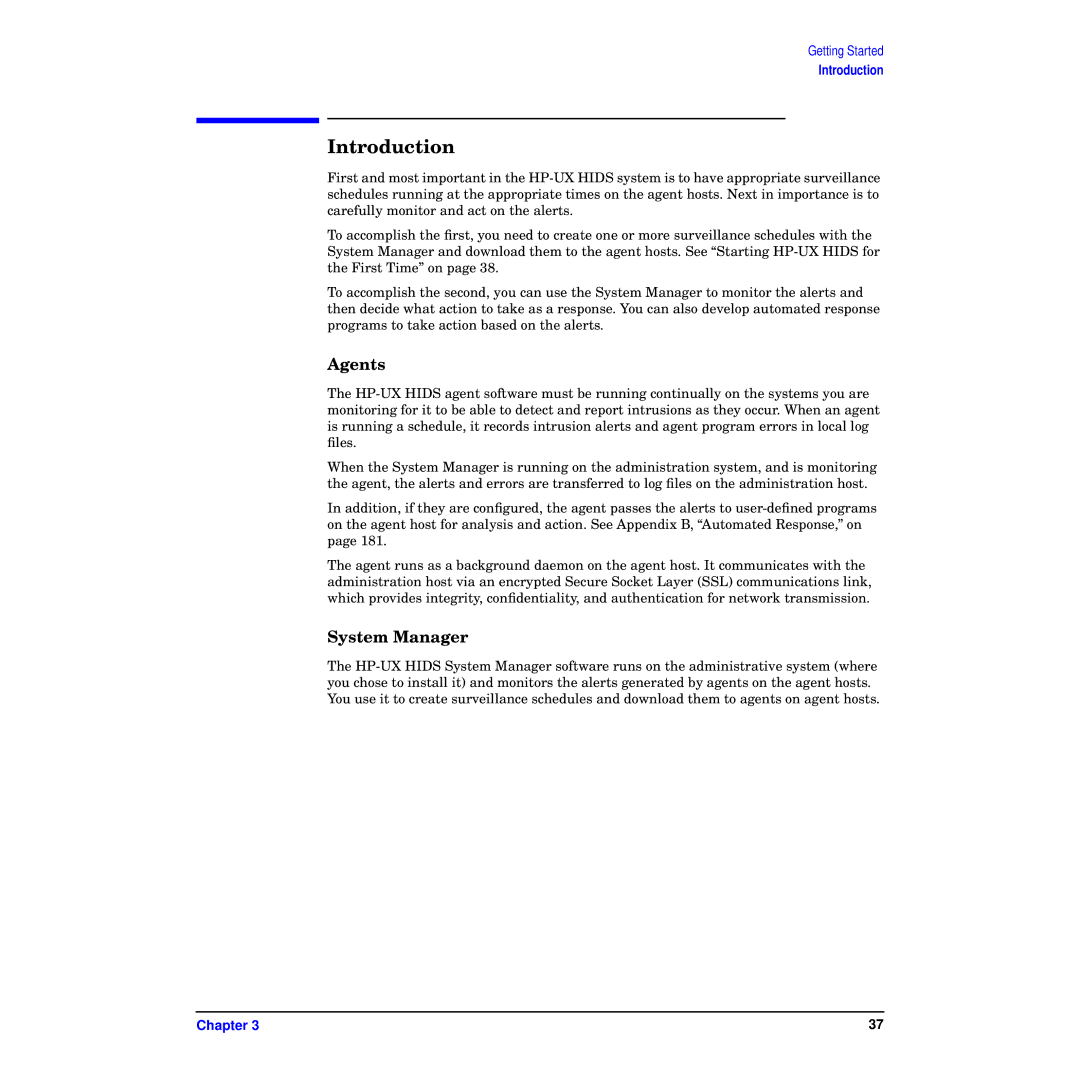
Getting Started
Introduction
Introduction
First and most important in the
To accomplish the first, you need to create one or more surveillance schedules with the System Manager and download them to the agent hosts. See “Starting
To accomplish the second, you can use the System Manager to monitor the alerts and then decide what action to take as a response. You can also develop automated response programs to take action based on the alerts.
Agents
The
When the System Manager is running on the administration system, and is monitoring the agent, the alerts and errors are transferred to log files on the administration host.
In addition, if they are configured, the agent passes the alerts to
The agent runs as a background daemon on the agent host. It communicates with the administration host via an encrypted Secure Socket Layer (SSL) communications link, which provides integrity, confidentiality, and authentication for network transmission.
System Manager
The
Chapter 3 | 37 |
